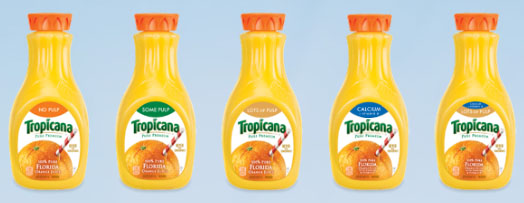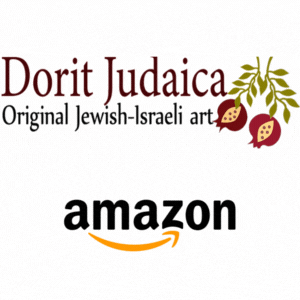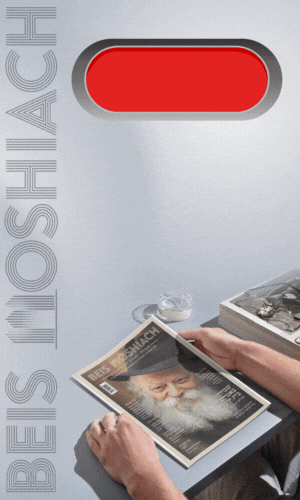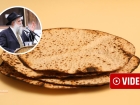Rabbi Hoffman’s Update Regarding Tropicana Juices
After an article by Rabbi Yair Hoffman stirred a storm in a cup of Orange Juice, stating that Tropicana Orange Juice has bugs and is therefore prohibited, the OK Kashrus organization released a statement to the contrary ● Now Rabbi Yair Hoffman returns with an update, citing the dazzling amount of Halachic opinions regarding bugs (72 opinions!) and the relevance to Tropicana Orange Juice ● Read More
A few weeks ago, Rabbi Yair Hoffman penned a long article stating that Tropicana Juices contain “scale insects”. A week later, the OK Kashrus released a statement stating that “the OK tested the juices and also had them tested by an independent and knowledgeable posek, and all agreed that there are no halachic kashrus issues.”
Today, Rabbi Hoffman explains his position vis-a-vis the Tropicana controversy, in a long Halachic analysis, published in the Five Towns Jewish Times:
Five weeks ago, the Five Towns Jewish Times published an article regarding scale bugs found in Tropicana orange juice, one of the leading brands in the United States (“What’s Bugging Tropicana?,” November 28). The article had reported findings that the bugs were not prevalent enough to be considered a miyut ha’matzui since we had found them only in about 1 in 21 cups (1 bug in every 4.5 containers). The article mentioned that experts in Brooklyn and Lakewood were finding bugs at a much higher rate (8 to 16 scale bugs per container).
In the original article, I neglected to mention that the OK laboratories and a private laboratory found no scale bugs at all, and, as mentioned elsewhere, this author is fully convinced of the ehrlichkeit and rectitude of both the experts in Lakewood and Brooklyn and that of OK laboratories.
The article had conjectured that perhaps the difference in numbers between my earlier findings and those of the Lakewood and Brooklyn examiners was due to seasonal variances of the scale bugs. We were all using the same standard 62-rated mesh filter that is now being used at the mehudar fruit and vegetable preparation stations throughout New York and New Jersey. Both examinations were also using the same 59-ounce container of pulp-free Tropicana.
Recently, the findings of the checkers in Lakewood were confirmed to me. As a result, I would like to make the following clarifications and corrections to our presentation of the underlying facts:
• The scale bugs are being found on the “pulp residue” that is left over after each cup of juice has been poured through the mesh filter.
• The Lakewood inspectors are finding the scale bugs in the pulp residue after looking through a 10X jeweler’s loupe. They are not finding the scale bugs without use of the jeweler’s loupe, but there is no question that they are consistently finding scale bugs, cup after cup. The scale bugs are then removed from the pulp residue after they have been identified through the jeweler’s loupe and placed upon a light box or index card. At that point they are as visible and identifiable to the naked eye as is a regular scale bug that is generally found on the outside of an orange.
• This author was working within the p’sak of those poskim who rule that in order for a scale bug to be forbidden as a berya (creature), it must be identifiable in the mesh filter without use of a jeweler’s loupe or magnifying agent (such as the new USB microscopes). Without the jeweler’s loupe, I was not finding an infestation level above 1 in 20 cups.
• The scale bug numbers that are being found with use of magnification range from 8 to 16 per bottle and perhaps even more. (These scale bugs, however, are all dead, as opposed to the scale bugs that are often found on other types of fruits.)
• In my checking, in addition to the above, a portable 40X to 200X USB microscope was used to examine the pulp residue in two cups of the orange juice for any scale bugs—even those not observable without magnification. Although I did find bug parts, I did not find scale insects in pulp residue of these two cups.
• Generally speaking, there is an issue of muchzak b’tolaim—an assumption that there are bugs. If an item is deemed muchzak b’tolaim (generally more than 50% of the servings), then there is a Torah prohibition in eating it. Does this new reality create a situation of muchzak b’tolaim? There is also the possibility that this is a situation only of safek tolaim—the possible presence of bugs.
Halachic Discussion
As in many areas of halachah, the opinions of poskim vary, are wide-ranging, and can be rather confusing. Each person should consult with his or her own rav or posek as to the extent of the requirement for checking for bugs in fruits, vegetables, and other foods and liquids based upon their posek’s understanding of the halachic issues.
Generally speaking, a berya, whether dead or alive, is not batel (see Y.D. 100:1). On the other hand, the Gemara (Yuma 30a) tells us “Lo nitna Torah l’malachei ha’shareis—the Torah was not given to ministering angels.”
There may be as many as four underlying issues: (1) the debate about the extent of the need to employ the dirty water/mesh filter method; (2) the nature of what constitutes nirah l’einayim; (3) the issue of how intact a forbidden bug must be; and (4) the obligation to check for something in a “near look-alike” mixture.
I. Filtering
1. Some rabbis have said that one may consume fruits and vegetables when, after adequate cleansing, no bugs appear as bugs to the naked eye. They hold that no further checking or filtering is necessary. There may, however, be debate about what is considered adequate cleansing, and this may vary depending upon the season, the location, and origin of the item. Adherents of this position quote the Munkacser Rebbe (Darchei Teshuvah Y.D. 84:94) and Rav Moshe Feinstein, zt’l (I.M. Y.D. II #146) that the Torah does not require extraordinary means to avoid these prohibitions.
2. Others believe that in regard to fruits and vegetables that are often found to contain bugs, if a mesh filter is available, the dirty water/mesh filter method must be used. This means that after the fruit is adequately washed, the fruit or vegetable should be agitated in a bowl and the dirty water should be filtered through a mesh and examined for bugs. This position holds that if you do not own one it is good and proper to try to obtain such a filter, but one is not obligated to do so. They hold that filtering through a mesh filter does not constitute extraordinary means.
3. A third view is that now that the dirty water/mesh filter method has been discovered to often reveal the existence of nirah l’einayim bugs, one is fully obligated to employ the dirty water/mesh filter method.
II. Nirah L’einayim: Visible To The Eye
A. Some poskim have stated that a bug is considered nirah l’einayim only if it can be identifiable as a bug to the normal person’s eye or if it actually moves (cited in the name of Rabbi H. Schachter, shlita).
B. Other poskim hold that a bug is considered nirah l’einayim only if it can be identifiable as a bug to the trained person’s naked eye. They hold that if it appears as only a “dot” to the unaided eye and is identifiable as a bug only with magnification, there is no obligation to look at it under magnification, and it is permitted. This is the way they understand the Rema (in Y.D. 84:6).
C. Some poskim hold that if a dot is visible but not identifiable as a bug, but under magnification such a dot is more often than not revealed to be a bug, it is considered nirah l’einayim.
D. Other poskim hold that if a dot is visible but not identifiable as a bug, but under magnification the dot is revealed to be a bug, it is considered nirah l’einayim.
III. Intactness Of The Bug
i. Some are of the opinion that in addition to the nirah l’einayim issue, the “dot” must be a fully intact bug in order to be considered forbidden in a mixture. (This is the normative halachic view in terms of a mixture per the Rambam; they further reference the Rosh AZ 5:11.) If the dot is a larva or a casing of larvae, some poskim hold that it would also not be considered a berya (see Rav Vaya’s sefer page 145, where larvae are not considered briyos).
ii. Others have expressed the opinion that the “dot” must be mostly intact but does not need to be fully intact to be considered forbidden.
iii. Some have expressed the idea that the “dot” is forbidden even if it is only a bug part. They hold that in reference to this issue, Tosfos “Hahu” (A.Z. 69a) is the more normative view than that of Rabbeinu Tam or the Rosh.
IV. ‘Near Look-Alike’ Mixtures
a. Some poskim explain that when there is a “near look-alike” mixture (ta’aroves) there is no obligation to remove an item that cannot be identified as a bug to the naked eye of a trained expert within the mixture—even though he may be able to identify it as a bug were it not in a mixture.
b. Others are of the opinion that there is such an obligation to check. They hold that there is no requirement for a bug to be discernible to the naked eye within the mixture if it is discernible when not in the mixture. They further hold that if it cannot be filtered out, it is forbidden.
• • •
As we can see, there are a full 72 possible halachic positions in regard to the general issue of bugs in our foods. To this author’s knowledge, no one has ever compiled a full list of which poskim hold which view in regard to these three (or four) underlying issues, although there has been general agreement in many of the areas described above. A rav or posek could be of the position of 2-C-ii-a, which would, in our case, permit Tropicana orange juice. Another rav could be of the position 3-D-iii-b, which would forbid Tropicana orange juice. It should be stressed that people should ask their own rav or posek as to the exact parameters of what they hold in regard to these four areas.
Some kashrus agencies have a policy of allowing a product to be certified even when there is a miyut ha’matzui, if (a) a cleaner version of the item is not available, and (b) the processing of the food product is generally thought to thoroughly grind up the bug. This is based upon their reading of the Shach (Y.D. 84:29) and Taz (Y.D. 138:14; 137:4) and Pischei Teshuvah (Y.D. 99:4). If the company is doing it purposefully to negate or be mevatel the bugs, however, they disallow it.
This author presented the current facts to a few poskim. The first posek permitted the juice on the basis that there is no obligation to remove an item that cannot be identified as a bug to the naked eye of a trained expert within a mixture —even though he may be able to identify it as a bug were it not in a mixture. (This is small letter (a) in the fourth factor). One of the leading Poskim in America also felt that the juice was permitted, but did not elaborate as to the rationale.
It should be stressed that the rabbanim and poskim who hold of (b) in the fourth factor would forbid Tropicana orange juice assuming that the scale bug is completely intact (the normative position of the Rambam).
In regard to the second factor of exactly how nirah l’einayim something must be (a debate between Rav Vosner, who forbade, and a ruling by Rav Chaim Ozer, who was more lenient—a reference that I am still looking for), this author received the following ruling from Rav Elyashiv, zt’l, regarding bugs in water: “C,” but ra’ui l’hachmir, it is worthy to be stringent for “D.” He did not wish to rule conclusively like D, but agreed to C. It should be noted that the “worthy to be stringent” was issued in regard to water, which is easily filtered—juice is not.
This week, the publisher of the Five Towns Jewish Times, who is currently in Eretz Yisrael as of this writing, hopes to present a letter to Rav Chaim Kanievsky, shlita, asking him for his positions regarding the aforementioned four factors as well as the status of the juice in light of the infestation levels occurring regularly now. The Five Towns Jewish Times will hopefully post a video of the answer on its website, 5tjt.com.
The author can be reached at [email protected]
1721
Join ChabadInfo's News Roundup and alerts for the HOTTEST Chabad news and updates!











































What does The Rabbonim Rabbi Schwei Or Rabbi Braun Say on this matter